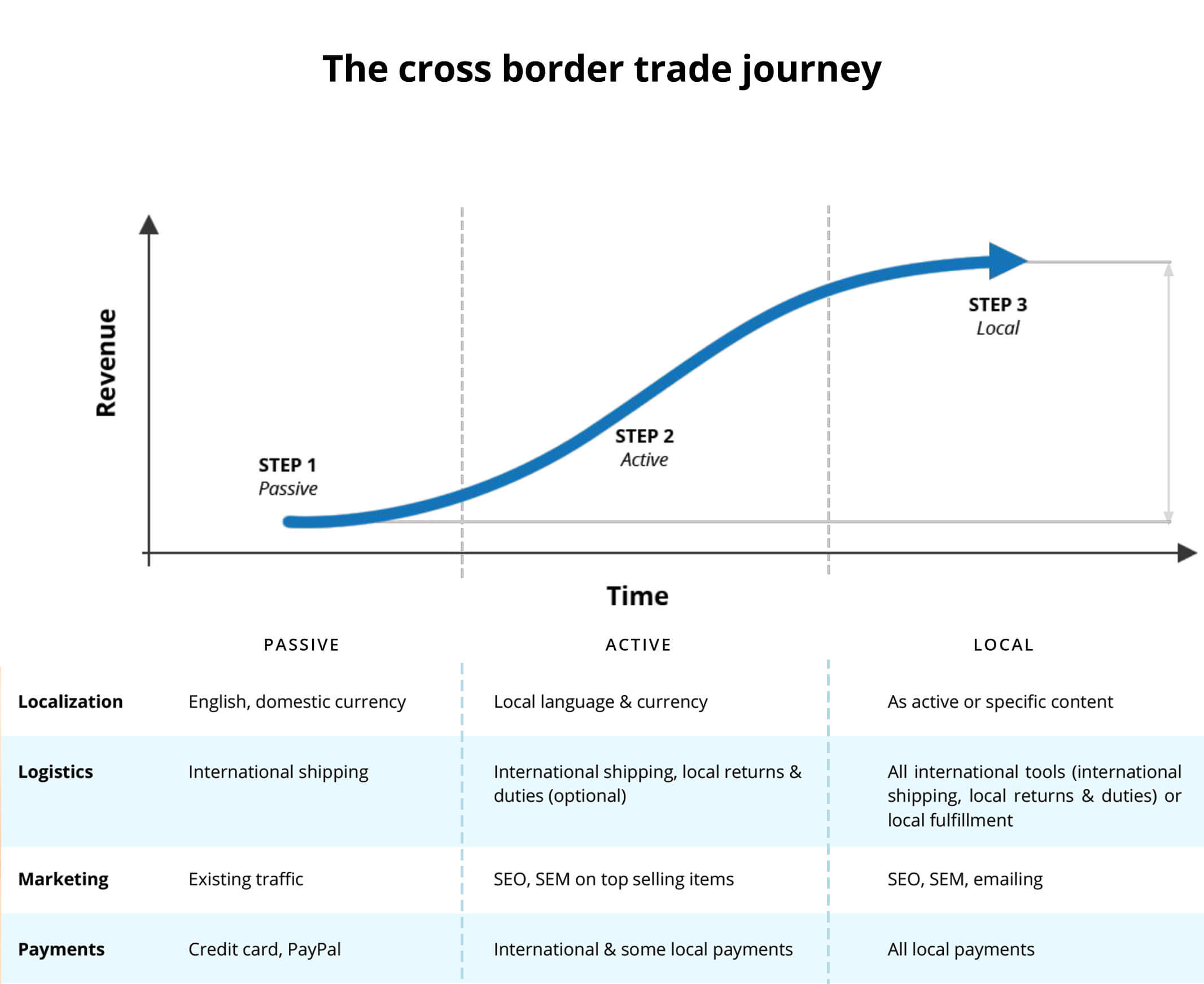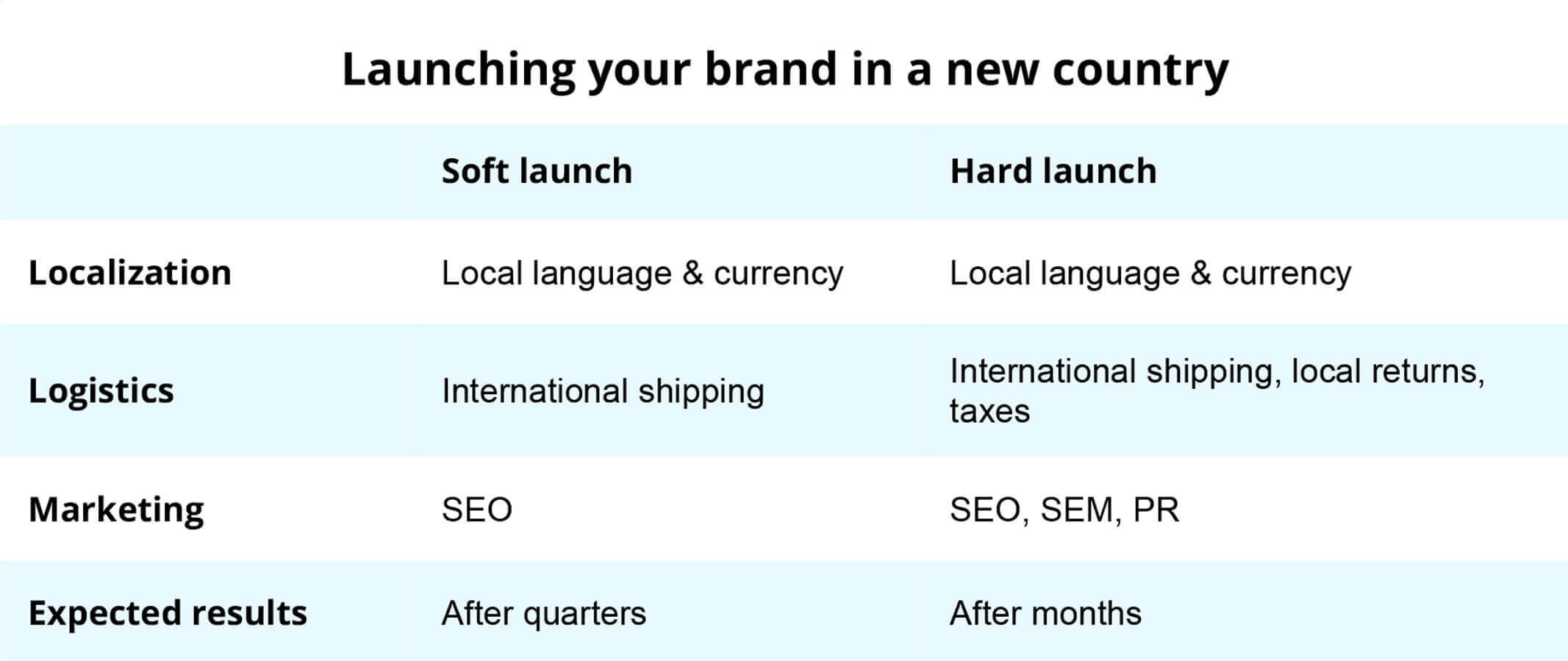International ecommerce is a multi-trillion dollar opportunity for online retailers. Thus, many ecommerce brands have decided to launch their stores abroad.
For example, the British fashion giant ASOS has become a global brand with around 60% of its business coming from abroad. The cornerstone of ASOS’ ecommerce success was offering a fully localized buying experience to their key international markets.
Going global can bring big sales figures for big brands. However, it also adds complexities in technology and operations. For this reason, the way ecommerce retailers handle their international growth shouldn’t be hit and miss.
When expanding a brand abroad, it’s important to consider:
- the optimal approach for the retailer’s global growth strategy
- foreign online markets with the biggest sales potential
- the simplest way to achieve big results.
Benjamin Cohen, Co-Founder at Glopal, talks about international growth strategies for ecommerce brands and explains how to get maximum results with minimum efforts.

Benjamin Cohen, Co-Founder at Glopal
International growth strategies: interview with Benjamin Cohen
What’s the best way to build international sales strategy?
Benjamin: Essentially, it’s about getting started, having a blueprint, making it scalable and staying practical. If you determine a blueprint for success, you should be able to replicate it in new markets.
So you select and prioritize your markets. Then you choose your optimal approach (active/passive; soft/hard) and decide on the level of buying experience you want to offer.
Your decisions will impact your operations and organizational structure. Once you know your business parameters, you need to understand the local drivers. For example, when choosing markets, consider their sizes & competitiveness and understand local buyer acquisition costs.
What are the basic stages of growing an ecommerce business abroad?
Benjamin: Imagine a growing child. Before it starts walking and running, it first crawls. Your business operates in a similar way. At the beginning of international expansion it’s unlikely to become the top global runner on day 1.
For this reason, you usually need to start simple, for example by selling on marketplaces like eBay or Amazon. This is an efficient shortcut if you can get better reach at a lower cost. You also test demand for your products before spending big budgets.
Further, it’s good to test a few new markets and their actual sales potential. However, it may not be the best idea to push into too many new countries all at once. In other words, walk before you run.
Sometimes you may be in a position to speed up. You can optimize your existing website to be able to accept international orders or even build localized websites for certain markets, e.g. with local domain names, checkout options, payment and messaging.
The most advanced option is fully localizing the buyer experience. This includes setting up an advanced marketing plan, sorting out international delivery & easy returns, taking care of customs compliance and providing great customer experience.
Choose your optimal approach (active/passive; soft/hard) and decide on the level of buying experience you want to offer.
Can you elaborate on the crawl/walk/run stages of expanding a business abroad?
Benjamin: The crawl stage is about simple solutions with simple tests and minimal risk. You can enable international shipping on your existing website and start with one or two markets that are more open to cross-border commerce. It’s more of a passive approach and you expect foreign buyers to find you.
The walk phase is more active, customer-oriented and dedicated to a particular country. Here you can increase sales & market share by acting global & thinking local. You localize the basics (language, currency, checkout) and adjust your shipping rates.
Further, you potentially sort out taxes and duties calculators to avoid delivery issues; you can also consider local returns. You start to put small investments in local marketing. However, at this stage you don’t consider all buyer experience steps, but the critical ones only.
The run stage is about localizing buying experience fully. You optimize operations & marketing when a market is maturing: either when it has become a large part of your revenue or when you reach a market leading position. There’s more focus on repeat buying and on minimizing delivery times & logistics costs.

For big retailers it’s important to automate their workflows and ensure great customer experience, for example by guaranteeing the total landed cost so customers aren’t surprised by unexpected fees at the point of delivery.
How to select foreign online markets?
Benjamin: You can research the top countries with gaps in the market and/or strong demand for your products. Learn about popular product categories, market size for your category and shipping costs. Familiarize yourself with potential entry barriers, local buying trends and local holidays.
Further, understand spending patterns (e.g. Norwegian customers are usually more affluent than Greek ones) and return rates (e.g. return rates tend to be much higher in Germany compared to other EU countries). In some countries users may spend more but return less.
Finally, check competition. A market can be large, e.g. the US or the UK, but also fairly saturated with a high level of competition. On the other hand, ecommerce shoppers from smaller or less mature markets are more likely to make international purchases, especially from larger international markets.
The run stage is about localizing buying experience fully. You optimize operations & marketing when a market is maturing.
How to assess whether a market has been a good choice?
Benjamin: By keeping track of your numbers and having metrics that measure your progress: sales numbers, website traffic, repeat buyers, reviews, social media following and so on. Your analytics will show you where your biggest numbers of international purchases come from.
Understanding your costs and return-on-investment is crucial. Remember that it can take time before you see any (impressive) results. Your brand may be recognized in your home country, but to achieve the same result abroad, you may have to overinvest initially with no guaranteed ROI.
There’s always a risk that things will simply not work out or gain traction so you may have to look elsewhere.
How to launch a brand in a new country to see the first sales?
Benjamin: When launching a brand in new countries, there’s a soft and a hard approach.
With the soft approach you offer foreign buyers a mostly localized buying experience with SEO in place. It’s an active but still more of a “let’s-wait-and-see” approach. You just let your sales grow and it usually takes a few quarters before you see any tangible results. For instance, SEO takes time.
The hard approach involves actively co-ordinating and putting much more in place, such as PR, search engine marketing or finding influencers. This way you kick-start your sales, creating enough assets to see results almost immediately.

Are most retailers’ approaches to global ecommerce reactive or proactive?
Benjamin: They range from those avoiding, or only accepting, international orders (passive/reactive) to those going for full localization & going multi-channel (proactive).
Proactive retailers make their store look as local as possible and do active marketing to grow their international customers database. They usually implement a strong international SEO strategy and may use local influencers that local buyers trust.
Unfortunately, a large number of retailers passively accept international orders, which is more of a coincidence rather than the result of careful planning & execution. That’s probably a big waste of sales potential for their businesses.
When the local market is reaching a plateau, it’s time to turn to cross-border commerce.
When and how should large brands approach international ecommerce?
Benjamin: When the local market is reaching a plateau, it’s time to turn to cross-border commerce. By targeting new markets, you can increase your market size and have lower acquisition costs.
It’s always a question of efficiency & profitability. After all, gaining new buyers at a controllable cost and building a positive brand image to generate repeat business are much easier domestically than internationally!
I recommend that you try to put in minimum efforts but enjoy maximum benefits. Consider a tailored ecommerce-oriented solution. It should help you minimize costs, maximize efficiency, improve your workflow and enhance customer experience.
Finally, as ecommerce is a dynamic industry, you must keep up with the speed of changes: stay flexible, fast and agile. According to Forbes, by revisiting your goals quarterly rather than annually, you can expect around 30% better results.

As ecommerce is a dynamic industry, you must keep up with the speed of changes: stay flexible, fast and agile.
Where do you see international ecommerce in 2 years?
Benjamin: Globalization as we know it is coming to an end. Even though social media are driving uniform consumer behavior across the globe, the world is becoming more “local” with global customers expecting a local buying experience.
As a result, there’s no single global ecommerce, but rather a network of globally connected “local” businesses. To expand globally, it’s necessary to adapt your business approach accordingly. For example, to do business in China, adapt your product, operations and marketing strategies to the Chinese market.
In 2 years I envision ecommerce leaders operating globally but in a truly local way. That’s why, if you are seriously considering expanding globally, adapting your business to local markets is more of a must than an option.
In 2 years I envision ecommerce leaders operating globally but in a truly local way.






